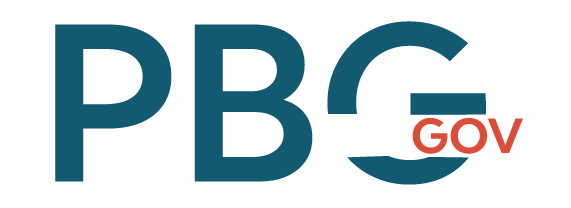Cloud FinOps Could Save the U.S. Government Billions . . . But We Need to Act Now
In recent years, Cloud FinOps has gained significant traction in the private sector as a highly effective way to optimize cloud spend. FinOps is a partnership between Finance and DevOps that ensures collaboration and transparency from procurement to cloud implementation and the utilization of cloud resources. The methodology is rapidly becoming best practice in the private sector. Early government adoptions show its implementation in agencies comes with its own set of challenges . . . and major benefits.
The increased prevalence of Cloud FinOps (often simplified to “FinOps”) was apparent in the sold-out attendance at this summer’s second annual FinOpsX Conference. The conference is hosted by the FinOps Foundation, which was established in 2020 to codify the role of a cross-functional Cloud Center of Excellence for financial control, forecasting, and budgeting of cloud spend and has become the backbone and community-driver of Cloud FinOps.
As the Foundation’s work has spread, the public sector’s interest has been piqued, as demonstrated by the number of government attendees, including leaders from the Office of Personnel Management (OPM), Department of Veterans Affairs, Space Force, the Marine Corps, and Virginia’s Loudoun County Government. Among these constituents, much of the conversation centered around the growing need for government-focused thought leadership, hands-on practical guidance, and FinOps-informed and engaged public servants. The data, trends, and outlook of cloud spend covered in detail at the conference only served to reinforce those needs.
Ever-Expanding Cloud Spend Sparks Urgency
We all know that the federal government is a massive IT customer/spender, so the predictions of ever-increasing cloud spend are as relevant to the fed as to the private sector. Executive Director of the FinOps Foundation, J.R. Storment, referenced the $1.8 trillion of enterprise IT spending projected to shift to the cloud by 2025, at which point over half of global IT spending will be in the Cloud.
That projection should instill immediacy in all organizations, but with the Government’s budget schedule, processes, and procedures, we have no time to waste. We are already in the timeline where change needs to happen.
Cloud FinOps pioneer Melvin Brown, Deputy CIO of OPM, led a fireside chat on the challenges of and solutions for government adoption. “Government cloud spending is estimated to be around $60 billion in 2023. However, the government is typically behind commercial entities in cloud management and development. They are faced with similar FinOps challenges, and it’s estimated that FinOps could save the government around $1 billion a year,” Brown said. “We formed a Special Interest Group that has created a FinOps Public Sector Playbook to address the specific challenges that government agencies face in acquiring and managing cloud spend.”
There was also expertise on offer from other agencies. The Department of Veterans Affairs and U.S. Army’s Enterprise Cloud Management Agency hosted interactive sessions focused on cloud acquisition and procurement and implementation of FinOps in the public sector. This knowledge share by leading agencies is critical to a future where government cloud spend is managed, optimized, and universally understood.
(Yes, that means the heavy lift to create a government-specific, evidence-based implementation framework for Cloud FinOps has already been done for you. Check it out here.)
Government Adoption of FinOps: Benefits Outweigh Challenges
As with any innovation, embracing new processes and technologies is critical to success. However, adoption of new methods and tools like those that come with smart Cloud FinOps implementations can be challenging due to the massive footprints of legacy systems, strict regulatory and organizational frameworks, and compliance regulations that do not seamlessly align with FinOps practices. Public sector readiness also requires authorizing FinOps vendors and tools for federal government use, plus navigating the differences in procurement processes, policies, regulations, funding streams, budgeting, and incentives between commercial and public organizations. And who is going to actually do the work? Agencies will need to plan for the resources and expertise necessary.
That’s a lot to take on, and we know that even the most innovative agencies will run into constraints and hurdles.
But the effort is worth it. Successful Cloud FinOps results in a government that can deploy its IT funding intelligently to deliver the right products and services faster, a workforce that understands its cloud usage and how to optimize it, and a much more productive partnership between IT and Finance. Regardless of where an agency is in its cloud adoption journey or the size of its cloud footprint, the increased accountability and transparency that come with FinOps are indisputable. Governments have a responsibility to their constituents to make data-driven decisions and manage public funds efficiently. FinOps empowers government agencies to monitor cloud spending in real-time and align it with their financial goals.
What Should Government Leaders Do First?
If you recognize that starting your FinOps journey is imperative, here are some of the first steps PBG recommends. In a future blog, we will go deeper into these high-level steps to give you a more detailed blueprint.
- Read and explore the Public Sector Playbook.
- Identify your champions and get engaged in the FinOps community.
- Start thinking about all the moving pieces and necessary resources. Procurement, finance, IT engineering, product teams, and other business units all play a key role in FinOps.
The Big Picture of Cloud FinOps Implementation
The government sector is not new to cloud migration and transformation or cloud procurement. It values cost optimization, accountability, and efficiency in operations, and achieving those goals requires a tested methodology, which FinOps delivers on all fronts. Instead of simply cutting costs, FinOps empowers engineering, finance, and business to extract maximum business value from cloud investments and optimize spending within budgets. The year ahead promises to be a turning point in which governments around the world begin to adopt FinOps, making a difference in the management of public funds and thereby improving services for constituents.



